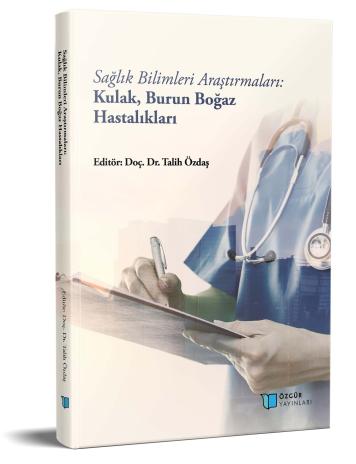
Kemiğe İmplante İşitme Cihazı Kullanan Hastalarda Yaşam Kalitesi ve İşitme Sonuçlarımız
Şu kitabın bölümü:
Özdaş,
T.
(ed.)
2023.
Sağlık Bilimleri Araştırmaları: Kulak, Burun & Boğaz Hastalıkları.
Özet
Amaç: İletim tipi işitme kaybı hem erişkin, hem de pediatrik hasta grubunda yaşam kalitesini önemli ölçüde düşüren ve sık görülen bir problemdir. Bu çalışmada, uzun yıllardır güvenli ve etkin bir şekilde yapılan kemiğe implante işitme cihazı ve softbandın yaşam kalitesi üzerine etkisi, odyolojik sonuçları, oluşan komplikasyonların sıklığı, türleri ve bu komplikasyonlara yaklaşım yöntemlerinin belirlenmesi amaçlanmıştır.
Gereç ve Yöntem: Çalışmamızda Çukurova Üniversitesi, Kulak-Burun-Boğaz Anabilim Dalı bünyesinde Ocak 2005 ve Eylül 2013 arasında iletim veya miks tip işitme kaybı sebebiyle KİİC tatbik edilen veya softband cihaz kullanan hastalar araştırmaya alındı.
Hasta memnuniyetini ölçmek amacıyla Uluslararası İşitme Cihazları Değerlendirme Envanteri Türkçe Versiyonu (IOI-HA-TR) ve Glasgow Erişkin ve Çocuk Değerlendirme Testleri (GDT) yapıldı.
Bulgular: Toplam hasta sayısı 34 olarak saptandı. Bu hastaların 23 tanesinde KİİC tatbiki yapılırken, kalan 11 hastada softband cihaz kullanıldı. Kemiğe implante işitme cihazı kullanan hastaların fonksiyonel kazançları 500 Hz’de 31,3 dB, 1000 Hz’de 45,5 dB, 2000 Hz’de 44,5 dB, 4000 Hz’de preop 44,3 dB olarak bulunmuştur. KİİC kullanan erişkin hastaların GDT skorları toplamda 27,6 olarak bulundu. GDT alt ölçeklerinden genel sağlıkta 35,8, sosyal sağlıkta 39,8, fiziksel sağlıkta 34,2 sonuçları elde edildi. Pediatrik grupta ise toplamda 41,6, alt ölçeklerden emosyonel alt ölçekte 51,4, sosyal alt ölçekte 30,0, eğitsel alt ölçekte 47,1, vital alt ölçekte 32,0 sonuçları elde edildi. IOI-HA-TR skorları ise KİİC kullanan hastalarda 25,22, softband kullananlarda ise 26,45 olarak bulundu.
Sonuç: Kemiğe implante işitme cihazı, iletim tipi işitme kaybında düşük komplikasyon oranları ile güvenilir ve etkin bir terapi yöntemidir. Odyolojik başarısı yanında, yaşam kalitesine de olumlu katkısı mevcuttur.

